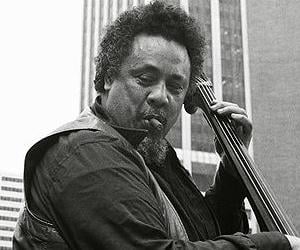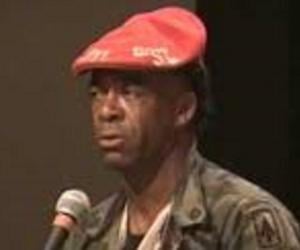Quick Facts
Nick Name: The Angry Man of Jazz
Also Known As: Charles Mingus Jr.
Died At Age: 56
Family:
Spouse/Ex-: Canilla Jeane Mingus, Celia Mingus, Susan Ungaro Mingus
father: Sgt. Charles Mingu
mother: Harriet Sophia Mingus, Mamie Carson
Bassists Composers
Died on: January 5, 1979
place of death: Cuernavaca, Mexico
Cause of Death: Amyotrophic Lateral Sclerosis
Ancestry: German American, Chinese Australian, Swedish American, Hong Kong American
U.S. State: Arizona
Childhood & Early Life
Charles Mingus Jr. was born in Nogales, Arizona. He is of Chinese-English-American descent and is also believed to be related to Abraham Lincoln through his grandmother.
When he was a young boy, his mother encouraged him to listen to only church music. However, he grew up listening to Duke Ellington and went on to study a number of musical instruments including the cello and the trombone.
In the late 1930s, he studied bass with Red Callender, but had very little means to afford a decent education. Due to his, he could not recite musical notations very quickly and this could not join musical orchestras.
From a very young age, he felt disliked in the world of music and these early experiences of racism were often echoed in his works much later.
In high school, he took up double bass and for five years, he studied with the principle bassist of the New York Philharmonic, Herman Reinshagen. He slowly began to gain recognition as a bass prodigy.
He gained early recognition from 1940 to 1950, when he began recording with a number of artists and played bass for a living with bandleaders such as Russell Jacquet, Howard McGhee, Red Norvo and Charlie Parker.
Career
He learnt that in order to excel in his domain, he would have to settle in the Big Apple. He moved to New York in 1951 and worked as a sideman, performing with other jazz bigwigs such as Miles Davis and Charlie Parker.
In 1952, he co-founded Debut Records with Max Roach. In a few years, he formed an experimental musicians’ group called ‘Jazz Workshop’.
1956 proved to be a breakthrough year for Mingus with the release of ‘Pitecanthropus Erectus’, which is believed to be his major work, both as a composer and an effective bandleader. The next year, he released the album, ‘The Clown’, under Atlantic Records.
In 1959, Mingus and his jazz workshop musicians recorded one of his best-known works, ‘Mingus Ah Um’, which featured archetypal compositions such as ‘Goodbye Pork Pie Hat’ and ‘Fables of Faubes’. The subsequent year, he released ‘Blues & Roots’.
In 1960, he formed a foursome with Richmond, Ted Curson and Eric Dolphy. The same year, the quartet released their only album, ‘Charles Mingus Presents Charles Mingus’.
From 1963 to 1966, he released a number of albums including ‘The Black Saint and the Sinner Lady’, ‘Mingus Plays Piano’ and ‘Mingus Mingus Mingus Mingus Mingus’. During this time, he also formed a sextet including the musicians, Jaki Byard, Eric Dolphy, Dannie Richmond, Clifford Jordan and Johnny Coles.
In the early 70s, his pace slowed down, but during this period, he recorded two of his most illustrious albums, ‘Changes One’ and ‘Changes Two’.
Towards the end of his life, in 1971, he was a professor for a semester at ‘The State University of New York’. The same year, he also published his autobiography, ‘Beneath the Underdog: His World as composed by Mingus’.
Major Works
His debut record, ‘Pitecanthropus Erectus’, which released in 1956 is largely considered his magnum opus. Even today it is considered, ‘one of the truly great modern jazz albums and it was given a maximum four-star rating by the famous, ‘The Penguin Guide to Jazz’.
Awards & Achievements
In 1971, he was awarded a Guggenheim Fellowship for Music Composition.
He was inducted into the ‘Down Beat Jazz Hall of Fame’, in 1971.
He was posthumously awarded a ‘Grammy Lifetime Achievement Award’.
In 1999, his album, ‘Mingus Dynasty’ was inducted into the Grammy Hall of Fame, posthumously.
He was inducted into the ‘Nesuhi Ertegun Jazz Hall of Fame’, posthumously, in 2005.
Personal Life & Legacy
Charles Mingus was known for his intense on-stage rage. He is also believed to have had a violent personality.
He married Sue Graham Ungaro in 1966. However, he was married to four other women and claims to have been married to two of them simultaneously.
Apart from his marriages, he was involved in a number of sexual encounters with many women and is believed to have had over 31 affairs in his lifetime.
Towards the final years of his life, he suffered from amyotrophic lateral sclerosis. He passed away at the age of 56 in Cuernavaca, Mexico and was cremated. His ashes were scattered in the Ganges River.
Following his death, ‘Epitaph’ one of his masterpieces was released after his death. The concert was organised by his widow, Sue Graham Mingus in 1989.
A number of cover versions of his music has been produced by popular musicians including Chuck D, Keith Richards and Dr. John.
The United States Postal Service issued a stamp in his honor, in 1995. Three years later, ‘Charles Mingus: Triumph of the Underdog’, a documentary on his life, was released.
Facts About Charles Mingus
Charles Mingus was known for his unique approach to composing music, often blending elements of jazz, classical, and gospel music in innovative ways.
Mingus was a skilled bassist and composer who was known for his dynamic and expressive playing style, which helped him stand out in the jazz world.
Mingus was also a talented bandleader, known for his ability to bring together diverse musicians and create music that pushed boundaries and challenged conventions.
Mingus was a passionate advocate for civil rights and social justice, using his music as a platform to address issues of race and inequality in America.
Mingus had a reputation for his fiery personality and strong opinions, but he was also known for his generosity and mentorship of younger musicians, leaving a lasting impact on the jazz community.
See more:


















